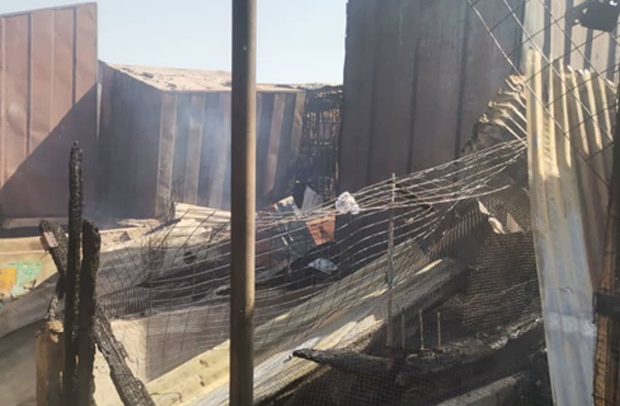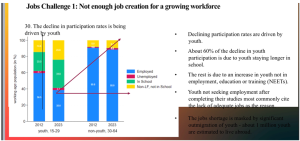
On Wednesday 6 August 2025, Ghana experienced a national tragedy: a Ghana Air Force Z-9 helicopter crashed in the Adansi Akrofuom District of the Ashanti Region, claiming the lives of eight distinguished public servants, including Defence Minister Edward Omane Boamah, Environment Minister Ibrahim Murtala Muhammed, and other key figures on a mission to address illegal mining. None survived.
Only days later, on Saturday 9 August, retired Col. Festus Aboagye, in a thoughtful conversation on Joy FM’s The File, crystallised the painfully familiar pattern in Ghana’s disaster response framework. He warned, “In disaster management, time is a matter of life and death. Every second counts, but we seem to lose hours.” His words lay bare a systemic weakness that has repeatedly cost lives—and could cost more if not addressed.
This is no minimised problem. From the Appiatse (Bogoso-Apiate) explosion in January 2022, to the devastating GOIL fire amid the 2015 Accra floods near Kwame Nkrumah Interchange, and now this helicopter crash—evidence mounts that in times of crisis, Ghana’s emergency response lacks speed, coordination, and resources.
When Disaster Strikes: A Chronicle of Failures
Appiatse explosion (20 January 2022)
An explosives-laden truck collided with a motorcycle in the village of Apiate, near Bogoso, detonating after about 45 minutes and causing catastrophic damage. At least 13 people were killed, around 200 injured, more than 500 buildings destroyed, and hundreds displaced.
While the truck appeared to have police and security escorts with the driver attempting to warn residents, locals disputed that escort vehicles were ever present. Rescue services arrived only after the blast, prompting experts to highlight lapses in safety procedures and regulatory compliance.
Dr Solomon Owusu condemned the response, urging that financial penalties alone (like the US$6 million fine levied against the explosives company MAXAM) were “insignificant” without systemic reform and adequate compensation to victims.
Fire amid Accra floods (June 2015)
Amid heavy flooding around the Kwame Nkrumah Interchange, a GOIL fuel station exploded and rapidly spread fire, killing scores of people—reported estimates ranged from 70 to over 100 fatalities.
The flooding worsened response efforts, and hospitals quickly became overwhelmed. The tragedy highlighted the lethal combination of natural and man-made disasters, and the lack of disaster preparedness—especially coordination between firefighting, health, and city agencies.
Black Wednesday Helicopter Crash (6 August 2025)
The latest disaster struck without warning. The Z-9 helicopter had taken off from Accra en route to Obuasi, apparently for a mission to tackle illegal mining, when it crashed into a forested mountainside.
Signals were lost, debris scattered, and no emergency response was immediately visible. The tragedy laid bare a readiness gap in aviation disaster response—especially when high-ranking officials are involved.
What’s Broken—and Why It Matters
Across these tragedies, clear patterns emerge:
No Clear Chain of Command. When seconds matter, confusion prevails—overlapping roles, unclear leadership, ad hoc direction.
Insufficient Equipment & Local Capacity. Emergency services are often under-resourced, especially outside major cities.
Poor Inter-Agency Coordination. Health, rescue, security, local government bodies often operate in silos.
Lack of Preparedness Drills. Rarely do agencies rehearse coordinated simulations for disasters—floods, explosions, air crashes.
Weak Communication & Alerts. Warnings travel slowly; public and responders alike may not receive alerts in time.
Delayed Accountability & Implementation. After-action reports may be filed, but follow-up and enforcement are inconsistent.
The cost of inaction is always measured in human lives. With each delay, casualties rise. With each unpractised drill, effectiveness falls. With each bureaucratic gap, trust erodes.
Global Best Practice: What Ghana Must Embrace
Countries with robust disaster frameworks emphasise:
- A centralised National Disaster Command Centre—operational 24/7, coordinating across sectors.
- Pre-positioned regional emergency assets—vehicles, medics, communications gear, ready to deploy instantly.
- Regular, varied simulation exercises—covering industrial accidents, air tragedies, natural disasters.
- Advanced technology adoption—drones, GIS mapping, satellite communication, early warning systems.
- Public education campaigns—on first aid, evacuation, situational awareness.
These frameworks are not theoretical—they have practical, measurable impacts in preserving life.
A Call to Action: We Can Do Better
Col. Aboagye’s words ring with urgency and truth: “We need to get serious—because the next disaster will not wait for us to prepare.” His call is clear: Ghana must stop reacting and begin preparing.
The helical of preventable tragedies now includes eight lives lost—eight leaders who died while serving the nation. Ghana must honour their memory by investing in a disaster response system worthy of their sacrifice.
What we cannot afford:
- Waiting for tragedy to strike before acting.
- Forgetting lessons when the headlines fade.
- Letting bureaucratic inertia endanger lives.
What we must do:
- Establish and staff a National Disaster Command Centre.
- Invest in rapid response tools and training across all regions.
- Mandate and fund inter-agency drills and evaluations.
- Legal accountability for post-incident recommendations.
- Educate communities on preparedness and response.
Conclusion
When disaster strikes, every second counts. But Ghana, time and again, finds itself losing hours. The helicopter crash of 6 August 2025 was a wake-up call, as were Appiatse in 2022 and the Nkrumah Interchange fire in 2015. Each loss was avoidable.
A prepared nation saves lives. A prepared nation protects its people, its institutions, and its future.
Ghana, time to get serious.
The post Reflections by S.M.A: Seconds that matter appeared first on The Business & Financial Times.
Read Full Story















Facebook
Twitter
Pinterest
Instagram
Google+
YouTube
LinkedIn
RSS